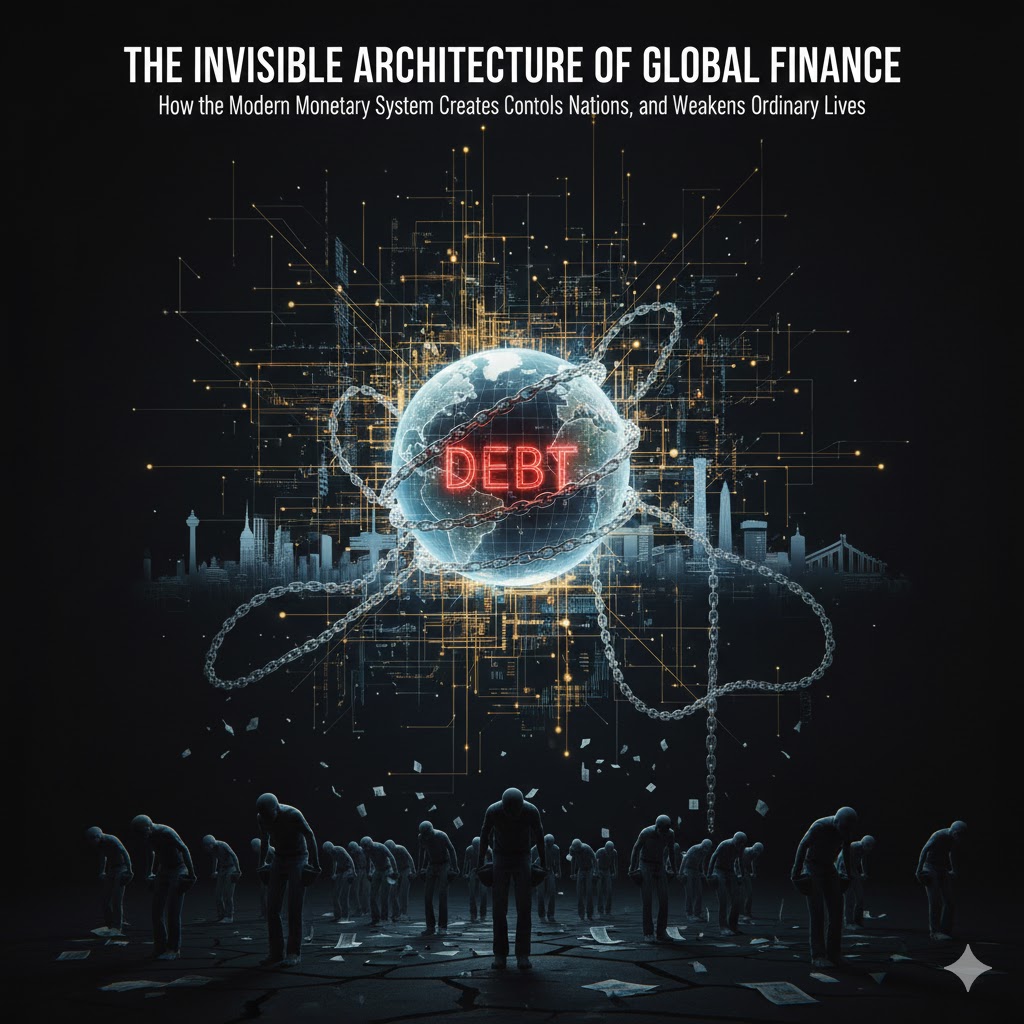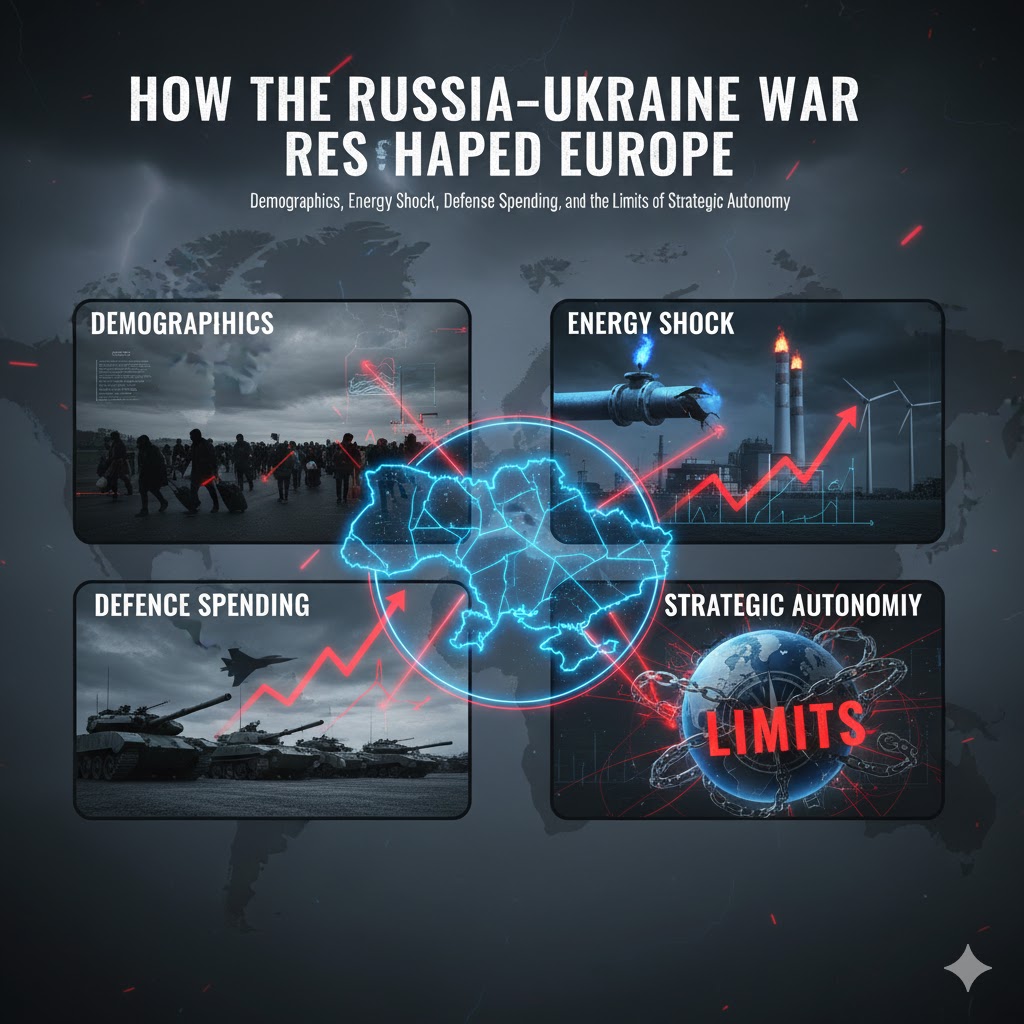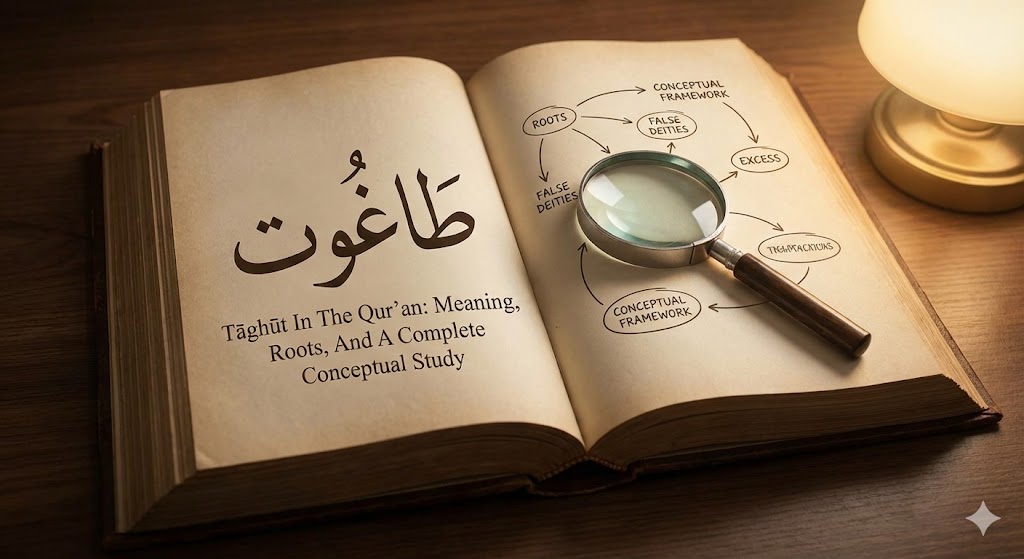Few foreign-policy pivots feel as jarring as the recent warmth between Washington and Islamabad. For decades, the U.S.–Pakistan relationship was defined by mutual suspicion: ruptures over Afghanistan, intelligence rows, and a long catalogue of grievances on both sides. Yet in 2025 the diplomatic script suddenly looks different — public praise from U.S. leaders, high-profile meetings, Saudi-Pakistan defence ties, and a Pakistan that is visibly courting Moscow and Riyadh while sitting for photo-ops in Washington. The dissonance is palpable: why are two capitals that openly distrust one another now behaving like cooperative partners?
This article contends that the apparent thaw is not a sentimental reconciliation but a strategic, interest-driven reset. It is a pragmatic response to immediate risks — chiefly the danger of uncontrolled India–Pakistan escalation, shifting Gulf politics, and the scramble for strategic resources and partnerships in an era of intensifying great-power rivalry. Both Washington and Islamabad confront constraints that make tactical rapprochement useful: the United States needs influence and crisis channels in South Asia; Pakistan needs economic cushions, political space, and diplomatic hedges.
Understanding this moment requires peeling back public theatre to reveal incentives, leverage and tradeoffs. The following analysis examines what has changed on the ground, why each side is willing to show warmth now, the role of third parties (Saudi Arabia, China, Russia), how New Delhi should read these moves, and — most importantly — the realistic scenarios ahead. The question is not whether friendship has returned, but how transactional alignments will reshape risks, diplomacy and power balances across the region.
The factual anchor points (what’s happened lately)
Five concrete developments crystallize the moment:
The single most visible new fact on the map is the Saudi–Pakistan Strategic Mutual Defence Agreement (SMDA) signed in mid-September 2025. This is not a routine memorandum of understanding: it commits Riyadh and Islamabad to closer military coordination, contingency planning, and deeper defense ties. For Pakistan the SMDA is a geopolitical prize — it promises financial cushions, training, and political cover at a time when Islamabad needs both. For Saudi Arabia it buys an extended security footprint into South Asia and strengthens Riyadh’s ability to shape outcomes in the Indian Ocean and the Gulf littoral. Regionally, the pact raises the strategic stakes of any India–Pakistan crisis because it brings an important Gulf actor formally closer to Pakistani security concerns.
Closely connected to that pact is the unusual public warmth between Islamabad and Washington. In 2025 senior U.S. officials — including the president — hosted Pakistan’s prime minister and the army chief and offered conspicuously positive language about Pakistan’s role in regional stability. This is notable precisely because public praise of Pakistani generals by American political leaders was rare in the previous decade. The tone change signals a tactical U.S. decision: it is easier to cajole and influence a partner you treat with respect than one you treat with contempt. In practical terms, the meetings reopened fast channels of communication that matter in crisis management — lines by which de-escalatory messages, intelligence, and urgent logistics can flow.
At the same time Islamabad has doubled down on multi-vector diplomacy. Pakistan’s leadership has not abandoned its long-standing ties with China and its pragmatic outreach to Russia; high-level meetings with Moscow this year are part of a conscious pattern of diversification. The purpose is straightforward: by demonstrating it has multiple patrons, Pakistan increases its bargaining power and reduces the risk of strategic dependency. That calculation also recalibrates how outside powers — including the U.S. — approach Islamabad: engagement now offers leverage where isolation would simply push Pakistan deeper into other camps.
A broader layer of analysis from Western policy centres makes the U.S. logic plain: after the near-catastrophic India–Pakistan escalation in May 2025, Washington concluded it cannot credibly manage South Asian stability without active channels into Islamabad. The calculus is risk-management more than friendship. If the United States privileges only one side during crises, it forfeits the ability to mediate, to reduce misperception, and to influence the choices that prevent accidental escalation between two nuclear-armed neighbours. That realist logic explains the deliberate tone and posture shift in U.S. policy toward Pakistan this year.
Finally, Pakistan’s value to external powers has grown in material terms. Islamabad is opening access to energy projects, strategic minerals, and port and logistics capacities that matter to global supply chains and to countries looking to diversify away from single-source dependencies. Gulf states are deepening economic ties, and private foreign firms — including U.S. companies — are showing renewed interest in Pakistani projects. In other words, Pakistan today is not only geopolitically useful as a conduit for influence but also economically interesting as a source of resources and infrastructure investment; that makes engagement doubly attractive to capitals balancing both security and economic priorities.
Taken together, these developments are more than isolated headlines. They show that Pakistan is not a passive object of external strategy; it is an active, agency-rich player using diplomacy, security pacts and economic openings to expand its options. They also show why Washington has chosen engagement over estrangement: the immediate utility of crisis channels, the desire to shape Pakistan’s choices, and the prospect of accessing resources and regional partnerships make re-engagement a pragmatic, if fragile, policy.
Why the U.S. is leaning in now: a calculus of risk, leverage and resources
There are four interlocking reasons Washington has chosen to engage and publicly praise Pakistan despite decades of mutual mistrust.
1) Preventing a nuclear escalation and stabilizing South Asia.
The May 2025 India–Pakistan exchange (missiles, drones, intense aerial engagements) sent a shockwave through capitals anxious about uncontrolled escalation between two nuclear states. The U.S. calculated that it cannot credibly manage a crisis from the outside if Islamabad feels abandoned. Maintaining lines to Pakistan — military, intelligence and diplomatic — reduces the risk that misunderstandings spiral out of control. The tactical logic is simple: you don’t want both poles to be purely estranged when they’re one misfire away from catastrophe.
2) Leverage over de-escalation and influence.
If Washington appeared to privilege only Delhi in moments of crisis, it would lose leverage over Islamabad and therefore lose a stabilizing hand. Reengagement buys the U.S. negotiating currency; praise and meetings are cheap forms of leverage that can be spent when urgent de-escalation is required. Think of it as hedging: keep channels open so you can push and pull both capitals when conflict risks spike.
3) Strategic resources and economic carrots.
Pakistan’s newfound value to external powers rests on tangible assets: a portfolio of critical minerals, undeveloped energy reserves, and strategically placed ports and transport corridors. Minerals such as copper, rare metals and other polymetallic deposits matter to countries racing to secure supply chains for electrification, defence and high-tech manufacturing. Add to that Pakistan’s onshore and offshore energy prospects and the deep-water ports on the Arabian Sea — access points that can re-route trade and energy shipments — and you get a picture of a state that is useful not only for geopolitics but for raw economic diversification. Those material facts change the bargaining table: projects bring jobs, revenue and visible political wins for Islamabad, which in turn alters Pakistan’s options and incentives.
Economic carrots work because they create repeated, routinized contact between foreign firms, foreign governments and Pakistani ministries — and those contacts become diplomatic levers. A large minerals contract or an energy deal requires security guarantees, regulatory stability and logistical cooperation; to secure them, Islamabad must engage with investor capitals on terms that create dependencies and political constituencies in favour of stable relations. In short, investment buys ordinary channels of influence: it gives outside powers a stake in Pakistan’s domestic stability, a voice in institutional choices, and leverage over behaviours that matter for regional security, from counterterrorism cooperation to crisis de-escalation.
The Saudi security deal and Gulf money amplify this dynamic. When defence commitments come paired with capital flows — infrastructure projects, sovereign investment, credit lines — they offer Pakistan both a shield and a payoff. That combination makes Islamabad more consequential to others: states that invest want to protect their investments, and they therefore acquire a degree of influence without the overt costs of military basing or permanent deployments. For Washington, funneling commercial engagement and investment into Pakistan is a lower-political-cost way to keep Islamabad responsive while preserving options in a crowded strategic theatre.
None of this is risk-free. Resource projects in weak-governance environments can produce rent-seeking, local grievance, and corruption; ports and logistics hubs have dual-use potential that complicates strategic calculations; and the presence of multiple great-power investors raises the danger of competing strategic footprints rather than cooperative development. Ultimately, economic carrots can open doors and buy leverage, but they must be paired with strict governance safeguards, community buy-in and clear conditionality so that investment strengthens institutions and stability rather than simply underwriting short-term transactional politics.
4) Regional geopolitics and Gulf dynamics.
The Saudi–Pakistan SMDA arrives against a backdrop of shifting Gulf calculations. After a string of regional shocks — rising tensions around Israel, shifting U.S. posture at various moments, and an accelerating scramble for strategic depth — Gulf states have grown more willing to build forward hedges beyond their immediate neighbourhood. For Riyadh, deeper security ties with Islamabad buy a South Asian foothold: Pakistan’s military credibility, its maritime access, and its ability to influence diasporic and political currents in South Asia make it a useful partner for projecting influence and managing contingencies that ripple into the Gulf. In short, the Gulf is no longer merely an economic partner for Islamabad; it is a security patron with its own regional agenda.
That changing posture recasts Pakistan as a bridge between South Asia and the Gulf security complex. Ports, basing arrangements, joint exercises and intelligence-sharing link Pakistan’s strategic geography to Gulf priorities — from protecting energy sea lanes to shaping responses to regional conflicts. For partners in Washington and beyond, a Pakistan aligned (or at least closely engaged) with Gulf capitals can be both an asset and a complication: an asset because it creates additional lines to de-escalate crises, a complication because it multiplies the number of stakeholders whose interests must be reconciled in any regional crisis management calculus.
From Washington’s perspective the calculus is pragmatic damage control. The SMDA raises the strategic stakes of India–Pakistan crises by attaching powerful Gulf interests to Islamabad’s security calculus; if Riyadh has skin in the game, miscalculations carry wider consequences. Engaging Pakistan candidly — publicly praising leaders, opening commercial channels, maintaining military-to-military lines — is therefore a way to keep Islamabad responsive to U.S. de-escalatory inputs and to signal to Gulf partners that Washington is not absent from the theatre. The aim is not to displace Gulf influence but to ensure that multiple patrons do not pull Pakistan toward an adversarial posture that complicates crisis management.
Yet this new triangularity carries real risks. More actors with overlapping security commitments can increase the tempo and opacity of regional manoeuvres: joint exercises become signalling tools, port access acquires dual-use potential, and financial lifelines can translate into political leverage that excites domestic nationalist pushback. The worst outcome would be a hardened alignment in which Pakistan’s external patrons — Gulf capital on one side, Beijing and Moscow on the other — institutionalize competing expectations that reduce Islamabad’s room to manoeuvre and raise the odds of misperception-driven escalation. Managing that risk will require disciplined crisis diplomacy, transparency about the scope of security commitments, and, crucially, multilateral mechanisms to deconflict interests before they ossify into rival blocs.
Why Pakistan is pursuing this balancing act
At bottom, Islamabad’s foreign policy in 2025 reads as a rational, risk-aware strategy: do not put all your strategic eggs in one basket. After decades of outsized reliance on a narrow set of patrons and a pattern of being pulled into others’ rivalries, Pakistani decision-makers—from the military to the civilian elite—are deliberately widening their options. That shift looks like diplomatic restlessness to outsiders, but it is driven by clear, immediate incentives: economic survival, political legitimacy at home, and the hard calculus of state survival in an unstable neighbourhood. The aim is not ideological realignment but agency—creating maneuver space so Pakistan can respond to crises on its own terms rather than being boxed by any single external patron.
First among Islamabad’s motives is diversifying dependency. Past patterns—heavy strategic dependence on one or two partners for security guarantees, budgetary relief, and trade—left Pakistan vulnerable to sudden shocks when those partners’ priorities shifted. Diversification reduces that vulnerability. Engaging the United States economically, courting Gulf capital and security ties, continuing China’s strategic partnership, and even pragmatic outreach to Moscow are all ways to open multiple lines of credit, investment and diplomatic insurance. Each relationship brings different payoffs—cash, technology, markets, political cover—and by broadening the menu Pakistan reduces the leverage any one partner can exert.
Second, these moves are designed to buy immediate domestic breathing room. Pakistan faces acute macroeconomic pressures, fragile public finances, and recurrent security challenges. Announcing or delivering high-profile diplomatic wins—security pacts, investment pledges, energy deals—has a powerful domestic effect: it reassures markets, shoves off immediate fiscal pain, and gives the ruling coalition political ammunition. In other words, foreign policy here serves a clear domestic purpose: stabilize the economy, show results to voters and creditors, and create a short-term narrative of competence that buys time for longer reforms.
Third, Islamabad’s outward posture enhances its bargaining power. Multipolar outreach is a deliberate signalling device: by visibly showing it has alternatives—from Gulf patronage to Chinese investment to potential Western commercial ties—Pakistan raises the price of unilateral pressure from any one partner. This is transactional diplomacy: show buyers and lenders that Pakistan has options, then extract better terms—on debt, on project conditions, on security cooperation. The logic is simple and age-old: leverage begets choice, and choice reduces coercion.
Finally, the balancing act is about protecting sovereignty and preserving agency, especially in the eyes of senior Pakistani institutions. For the military and establishment, foreign ties are instruments to be used selectively; they do not want to find themselves in a position where a single patron dictates policy or drags Pakistan into unwanted commitments. Maintaining visible ties with multiple powers—while keeping relationships compartmentalized—helps signal independence, deters external pressure, and preserves the internal prestige of the security establishment. Taken together, these motives make Pakistan’s diplomacy look messy to outsiders but coherent to those who prize strategic autonomy in a volatile region.
What the public praise for Pakistani generals really means
Public praise of Pakistan’s military leadership from a U.S. president performs several discrete diplomatic functions that go well beyond simple flattery. First, it is a targeted signal to three separate audiences at once: (a) to Islamabad’s generals, that Washington is willing to engage them directly on urgent security tasks; (b) to Pakistan’s domestic audience, that their armed forces remain internationally respected and consequential; and (c) to regional and global partners, that the United States prefers pragmatic channels for crisis-management over public estrangement. That triple-audience framing is almost always intentional: words in public feed private access and create expectations about who will be consulted when the region heats up.
Second, public encomiums create immediate operational space. Praise lowers political friction for concrete, technical cooperation — faster intelligence sharing, expanded military-to-military contacts, joint logistics arrangements, and increased interoperability through exercises or training programs. Those operational ties are the real payoff: they embed routine cooperation that can be relied on in a crisis even if strategic disagreements remain. In practice, such public warmth lubricates bureaucratic approvals on both sides and shortens the time it takes for critical information or materiel to move when it matters most.
Third, there is a political economy dimension inside Pakistan. Praise from a major power enhances the military’s domestic legitimacy and bargaining position vis-à-vis civilian authorities. That matters because Pakistan’s civil-military balance is a key variable in its foreign policy: an empowered military can negotiate deals, tolerate certain partnerships, or push back against policies it deems inimical to security. External validation therefore has the side-effect of strengthening the institutional hand that Washington will need to deal with — useful in the near term for crisis management but potentially complicating democratic governance if it becomes a long-term pattern.
Finally, public praise also carries limits and conditionality by implication. It is not an unqualified endorsement of behavior or doctrine; rather, it is a transactional instrument that creates expectations. Washington’s compliments buy access and influence, and they typically expect reciprocation in the form of cooperation on counterterrorism, restraint in proxy activity, or support for de-escalatory messaging. There is also risk: overly visible praise can provoke backlash — domestically among critics of the military, regionally among rivals who interpret it as partiality, and in Washington where Congress and human-rights constituencies watch closely. Skilled diplomacy therefore uses praise sparingly, calibrated to secure practical returns without underwriting long-term distortions in Pakistan’s internal politics.
The Putin and Saudi angles: multi-vector diplomacy and why Washington tolerates it
Pakistan meeting Putin and signing SMDA with Saudi Arabia look, at first glance, like a tilt away from the West. But they are better read as insurance policies by Islamabad. Moscow offers deals (energy, military equipment), Riyadh offers finances and political cover, and Beijing provides the backbone of security cooperation. Islamabad’s play is to sit astride these relationships — and to offer partners the possibility of influence in South Asia.
Washington tolerates a degree of this because containment is costly and because pushing Pakistan into a tighter Russia-China fold would remove useful U.S. levers entirely. It’s a calibrated embrace: keep Pakistan in the room while reducing incentives to choose sides definitively.
Why India should be worried — and why it shouldn’t overreact
The prospect of Washington visibly re-engaging Islamabad is unsettling for New Delhi because it compresses two anxieties into one: practical loss of leverage in moments of crisis, and the political optics of being “balanced away” by a superpower India has courted for decades. If the United States is seen talking publicly — warmly — to Pakistan’s political and military leaders, India worries that Washington’s capacity to pressure Islamabad during a crisis will be reduced, that bilateral intelligence-sharing or covert channels may be reallocated, and that American diplomats will be less inclined to back India’s narrative in international fora. Politically, Indian leaders fear domestic blowback: any perception that Delhi has lost strategic primacy over its immediate neighbourhood can be exploited by opposition parties and used to stoke nationalist rhetoric. All of this makes the warming between Washington and Islamabad a legitimate source of concern.
Yet these worries must be measured against structural realities. The U.S.–India partnership is deep, multi-dimensional and durable: defense technology transfers, intelligence cooperation, maritime interoperability, and a shared strategic interest in a stable Indo-Pacific are not easily displaced by a transactional U.S.–Pakistan reset. Washington’s move to keep Pakistan “in the room” is strategic hedging, not a wholesale replacement of India as a partner. Put bluntly: Washington has more to lose by abandoning India’s cooperation on Indo-Pacific deterrence, semiconductor and defence supply chains, and long-term alliance architecture than it does by re-opening crisis management channels with Islamabad. India’s strategic weight — economic scale, defence-industrial base, geographic access to the Indian Ocean — remains central to U.S. planning over the long run.
Practically, New Delhi’s smartest posture is strategic realism rather than panic. That means three linked responses. First, shore up deterrence in ways that are credible but calibrated: accelerate command-and-control resilience, harden forward logistics, and ensure rapid replenishment of critical stocks without staging provocative cross-border deployments that could be misread as escalation. Second, preserve and deepen the existing U.S.–India architecture: push for more, not less, defense-technology cooperation, faster operational linkages (esp. maritime domain awareness and secure high-frequency crisis channels), and clearer crisis management protocols that bind Washington to procedural support even if it keeps talking to Islamabad. Third, broaden diplomatic reach: consolidate ties with Gulf partners, Japan, Australia, and European states to ensure India’s voice is multiply-represented in any regional crisis discussions.
There are policy moves India should avoid. Public chest-thumping or theatrical displays of anger directed at the U.S. would be self-defeating; they could push Washington into a defensive posture and reduce Delhi’s leverage to shape American behavior. Likewise, reflexive military posturing aimed solely at signaling toughness will raise tensions without changing the calculus of foreign capitals. Economic coercion directed at partners who invest in Pakistan or punitive measures against third states that recalibrate relations with Islamabad would likely backfire — turning transactional diplomacy into a zero-sum game that harms India’s own commercial and strategic interests.
India can, and should, use the moment to make itself an even more indispensable partner. That looks like practical offers: deepen technology co-production, accelerate joint projects in critical supply-chains (defense electronics, rare-earth processing, semiconductors), propose institutionalised trilateral crisis hotlines (India–U.S.–Pakistan) to routinize de-escalation, and lead a regional initiative on nuclear risk-reduction measures (communication protocols, pre-notification, maritime safety corridors). Quiet diplomacy — back-channeling with U.S. interlocutors to clarify red lines and to spell out India’s expectations during any crisis — will matter more than public recrimination.
Domestic politics also matters. New Delhi can inoculate itself against reactive pressure by explaining to its own public that U.S. engagement with Pakistan does not equate to abandonment of India’s interests; it is, instead, an operational effort to reduce the risk of unintended escalation in a dangerous neighbourhood. Responsible public messaging, accompanied by visible steps to reinforce national preparedness (not sabre-rattling), will reduce the political currency of those who would use the moment to foment panic.
In short: India’s concern is real and must be addressed with policy agility. But an overreaction risks producing the very strategic fracturing New Delhi fears. The best path is sober, multi-track manoeuvring — harden deterrence and operational readiness; deepen and diversify partnerships; use diplomacy to codify crisis channels; and avoid actions that turn transactional recalibration into strategic estrangement. That combination preserves India’s strategic autonomy while turning a potentially alarming development into a manageable element of a shifting regional order.
Scenarios: three plausible near-term futures
1) Functional hedging (most likely):
Washington, Islamabad and Riyadh sustain transactional cooperation — crisis channels remain open and Pakistan juggles partners. This reduces immediate escalation risk but leaves long-term alignments fuzzy.
2) Bundled strategic competition (riskier):
A deeper Saudi–Pakistan military link plus closer China–Pakistan ties creates a semi-institutional bloc that complicates U.S. power projection in the Indian Ocean and Gulf. This could force harder choices for the U.S. and India and increase confrontation risk. (This is the lower-probability, higher-impact tail risk.)
3) Cooling and re-alignment (contingent):
If Pakistan’s domestic instability or a diplomatic scandal erodes trust, Washington could pivot back to containment — producing renewed mistrust and instability.
What to watch — the key indicators
- Operational cooperation: new U.S.–Pakistan intelligence sharing or military logistics deals (formal or tacit).
- Economic follow-through: scale of U.S. private investment and signed energy/mineral contracts.
- The Saudi–Pakistan pact in practice: basing, joint exercises, joint procurement or force posture changes.
- India’s diplomatic moves: closer Gulf ties by New Delhi, or accelerated deterrent modernisation.
- Russian engagement: whether Pakistan–Russia military ties deepen beyond ceremonial visits.
Policy takeaway — what Washington, Islamabad, Delhi and Riyadh should do
For Washington: calibrate engagement so it preserves leverage without underwriting problematic domestic behaviours; focus on crisis-management architecture, transparently condition economic support on counterterrorism and stability deliverables, and use diplomacy to reduce the chances of miscalculation.
For Islamabad: use new partnerships to buy economic space and security guarantees, but avoid becoming a corridor for strategic rivalries that could bring the country under pressure. Deliver on governance and counterterrorism commitments to earn reliable partnerships.
For New Delhi: don’t mistake U.S. hedging for betrayal. Strengthen deterrence, expand diplomacy with the Gulf and Russia where interests align, and de-escalate bilateral flashpoints where possible to avoid giving third parties leverage.
For Riyadh: if the SMDA is to be credible and stabilizing, pair security assurances with sustained economic investment and clear crisis-management protocols — not merely slogans.
Bottom line: stability by pragmatism, not love
The recent warmth between Washington and Islamabad is a pragmatic response to overlapping short-term interests: the risk of nuclear escalation in South Asia, the value of Pakistani resources and geography, and Gulf realignments that make Islamabad more consequential. Public praise, meetings with generals, or Putin visits are all instruments in a complex balancing act; none prove a durable alliance shift by themselves.
But there is real danger: if these transactional ties harden into competing blocs (Pakistan+Saudi+China vs. U.S.+India+Gulf partners), the region’s risk profile will increase. The next 12–24 months will show whether this phase turns into cooperative risk-management — the better outcome — or into strategic fracturing that raises the odds of miscalculation.














